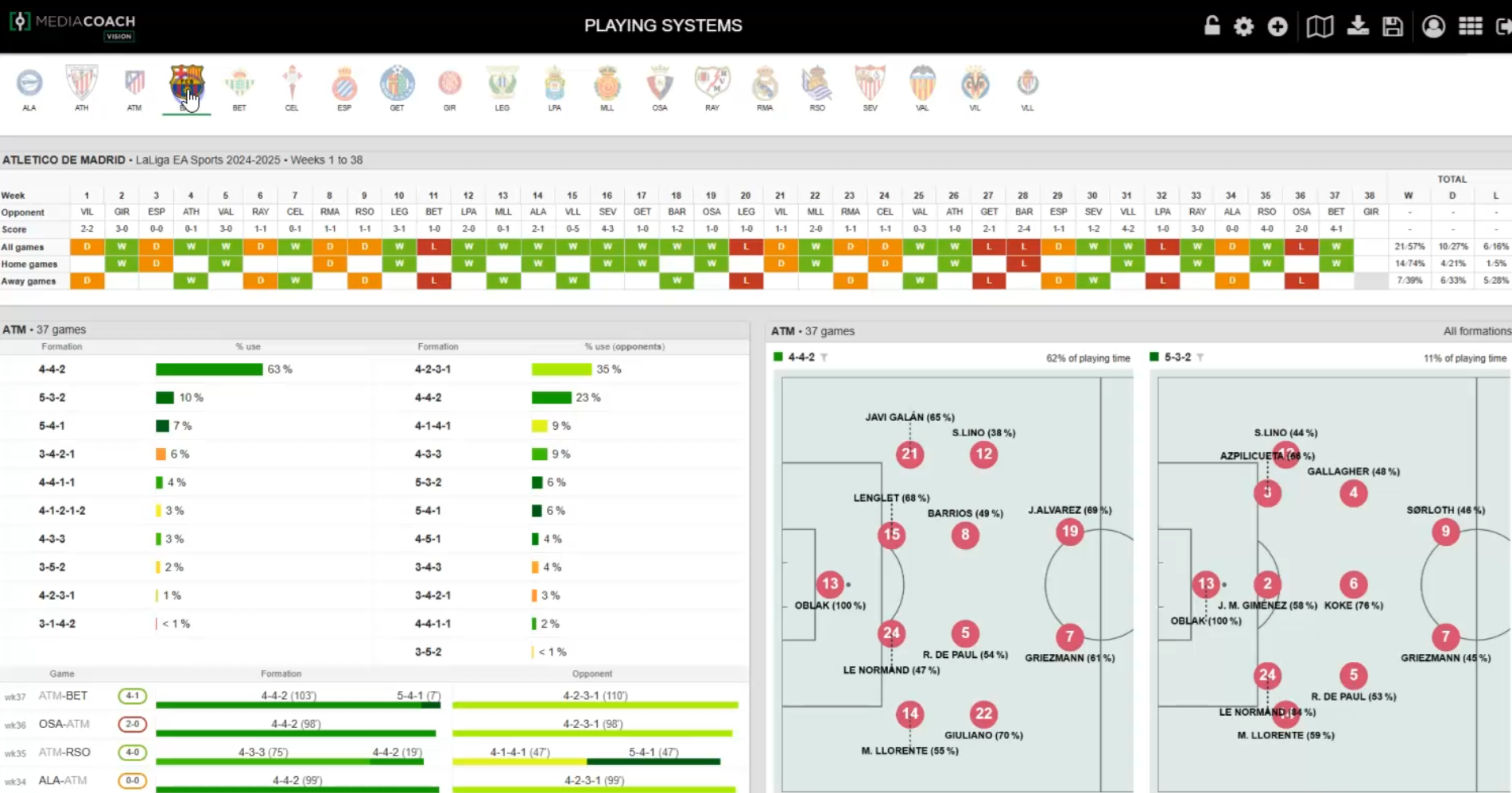
21 May The art of adaptation: why professional teams change their formation so often (and what this means for you as a coach)
When we think about a football team’s playing system, we often imagine a fixed structure, almost a signature of identity. “This team always plays a 4-3-3,” we hear. But reality in Spanish professional football tells a different story. In LALIGA, the playing system is far less of a badge and far more of a tactical tool—adaptable, reactive, and contextual.
This is one of the core messages emerging from one of the most comprehensive tactical studies to date:
? Use of the Playing Systems in Spanish Professional Football Leagues in Relation to Situational Variables
? https://doi.org/10.24310/riccafd.14.1.2025.21535
Based on 5,038 official matches from both LALIGA EA Sports and LALIGA Hypermotion (2019–2022), the study dismantles myths, reveals patterns, and offers a powerful map for coaches to understand when, how, and why formations shift across a season. Most importantly, it shows how this knowledge can enhance strategic decisions on the pitch.
The most used systems are no coincidence
Across the three seasons analysed, the most frequently used formations were:
- 4-4-2
- 4-5-1
- 4-3-3
But they weren’t distributed equally. Top-tier teams (LALIGA EA Sports) leaned towards 4-4-2 and 4-3-3, while second-tier teams (LALIGA Hypermotion) used the more conservative 4-5-1 more frequently, especially away from home. This suggests a logic of space control, caution, and more reactive styles when competitive parity is high.
This pattern aligns with the broader tactical evolution highlighted in
? Technical and tactical evolution of the offensive team sequences in LaLiga between 2008 and 2021
? https://doi.org/10.5114/biolsport.2024.131818
LALIGA teams have shifted towards longer attacking sequences, more passes, and less direct speed. Systems are not just about positioning—they configure intention.
Context matters, but not the way you think
One of the study’s most surprising findings: match location (home/away) and phase of the season had no significant impact on system choice. It’s the match result that drives tactical change.
Winning or chasing a result often triggers more offensive and flexible systems. When defending a lead or managing risk, teams strengthen midfield lines—often with the 4-5-1.
This echoes findings from
? Differences in playing style and technical performance according to team ranking in LaLiga
? https://doi.org/10.1371/journal.pone.0293095
Lower-ranked teams tend to play more direct and less elaborated football, while top teams show more associative play.
Tactical flexibility isn’t a bonus—it’s the norm
The data shows that professional teams change their formation around five times per season. And in-match formation changes are also common.
? Evolution of Tactics in Professional Soccer: An Analysis of Team Formations from 2012 to 2021
? https://doi.org/10.5114/jhk/167468
This complementary study confirms a rise in tactical variety over time, especially since 2017. Rigid structures are giving way to flexible tactical configurations.
For coaches, the message is clear: tactical versatility is a baseline requirement in today’s game.
Can formations explain team success?
There’s a clear pattern. The 4-3-3 is more common among successful teams, often those competing in European tournaments. Conversely, the 4-5-1 is more frequent among teams in lower standings.
? How do the football teams play in LaLiga? Analysis and comparison of playing styles according to the outcome
? https://doi.org/10.1080/24748668.2023.2262813
This is also supported by
? A longitudinal analysis of technical-tactical and physical performance of the teams in the Spanish LaLiga Santander: An eight-season study
? https://doi.org/10.5114/biolsport.2022.105331
While formation alone doesn’t dictate outcomes, its relationship with style and match success is substantial. Coaches who understand this can better anticipate opponents and maximise their team’s strengths.
What this means for your coaching practice
- Train multiple systems and ensure players understand their tactical implications. Versatility is vital.
- Don’t overemphasize match location—focus on opponent profile and match context.
- Be pragmatic: system switches mid-game are not signs of confusion, but of strategic clarity.
- Scout opponents tactically: the systems they most often use can reveal match intentions and adaptation thresholds.


